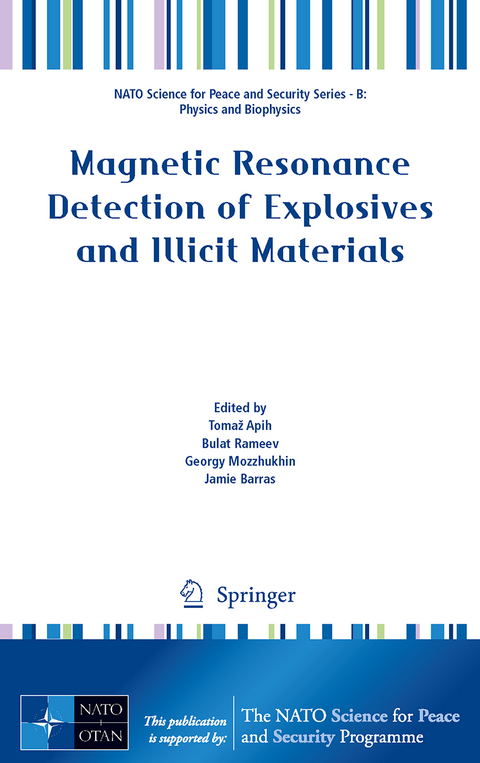
Magnetic Resonance Detection of Explosives and Illicit Materials
Springer (Verlag)
978-94-007-7264-9 (ISBN)
Part 1 Nuclear Quadrupole Resonance Detection of Solids.- Further improvement of NQR technique for detection of illicit substances.- An Overview of NQR Signal Detection Algorithms.- Nuclear Quadrupole Resonance of Pantaerythritol Tetranitrate (PETN) in Different Compositions.- Cross-relaxation enhanced NQR of ammonium nitrate in low magnetic field.- Investigating homonuclear broadening in NQR with Carr-Purcell Meiboom-Gill performed on p-chloroaniline.- Size Effect in 14N Nuclear Quadrupole Resonance Spectroscopy.- NQR Detection of Sodium Nitrite Recrystallized in Wood.- Part 2 Nuclear Magnetic Resonance Detection of Liquids.- Bottled Liquid Scanner for Security Checkpoints.- MagViz: A Bottled Liquids Scanner Using Ultra-low field NMR Relaxometry.- Multiparameter NMR Identification of Liquid Substances.- NMR-Based Liquid Explosives Detector: Advantages and Disadvantages of Different Configurations.- Composite Pulses in Inhomogeneous Field NMR.- Part 3 Other Techniques.- Novel HTS DC Squid Solutions For NMR Applications.- Passive Sub THz Imaging.
| Erscheint lt. Verlag | 11.10.2013 |
|---|---|
| Reihe/Serie | NATO Science for Peace and Security Series |
| Zusatzinfo | 50 Illustrations, color; 34 Illustrations, black and white; X, 168 p. 84 illus., 50 illus. in color. |
| Verlagsort | Dordrecht |
| Sprache | englisch |
| Maße | 155 x 235 mm |
| Themenwelt | Naturwissenschaften ► Chemie ► Analytische Chemie |
| Naturwissenschaften ► Physik / Astronomie | |
| Technik ► Bauwesen | |
| Schlagworte | Detection of Bulk Explosives • Detection of Liquid and Solid Explosives • Nuclear Quadrupole Resonance |
| ISBN-10 | 94-007-7264-5 / 9400772645 |
| ISBN-13 | 978-94-007-7264-9 / 9789400772649 |
| Zustand | Neuware |
| Haben Sie eine Frage zum Produkt? |
aus dem Bereich


